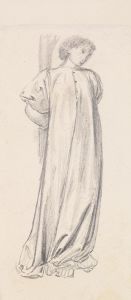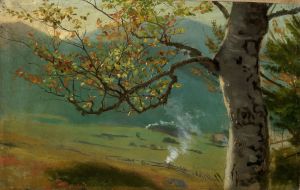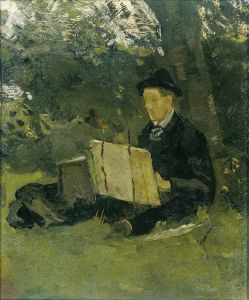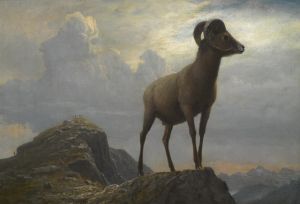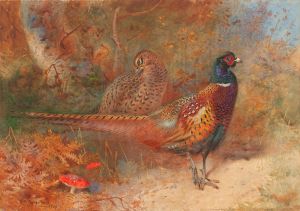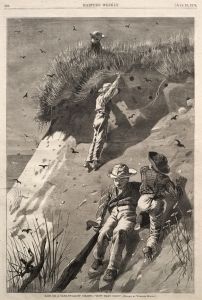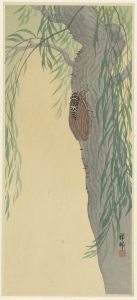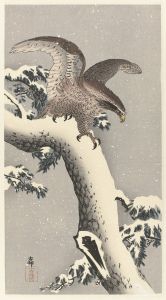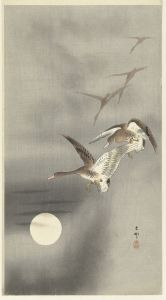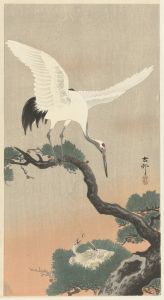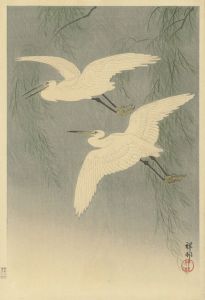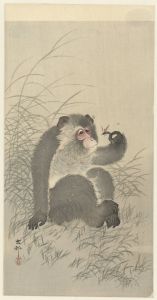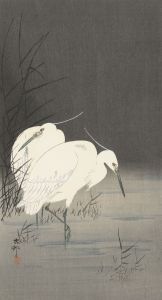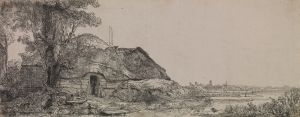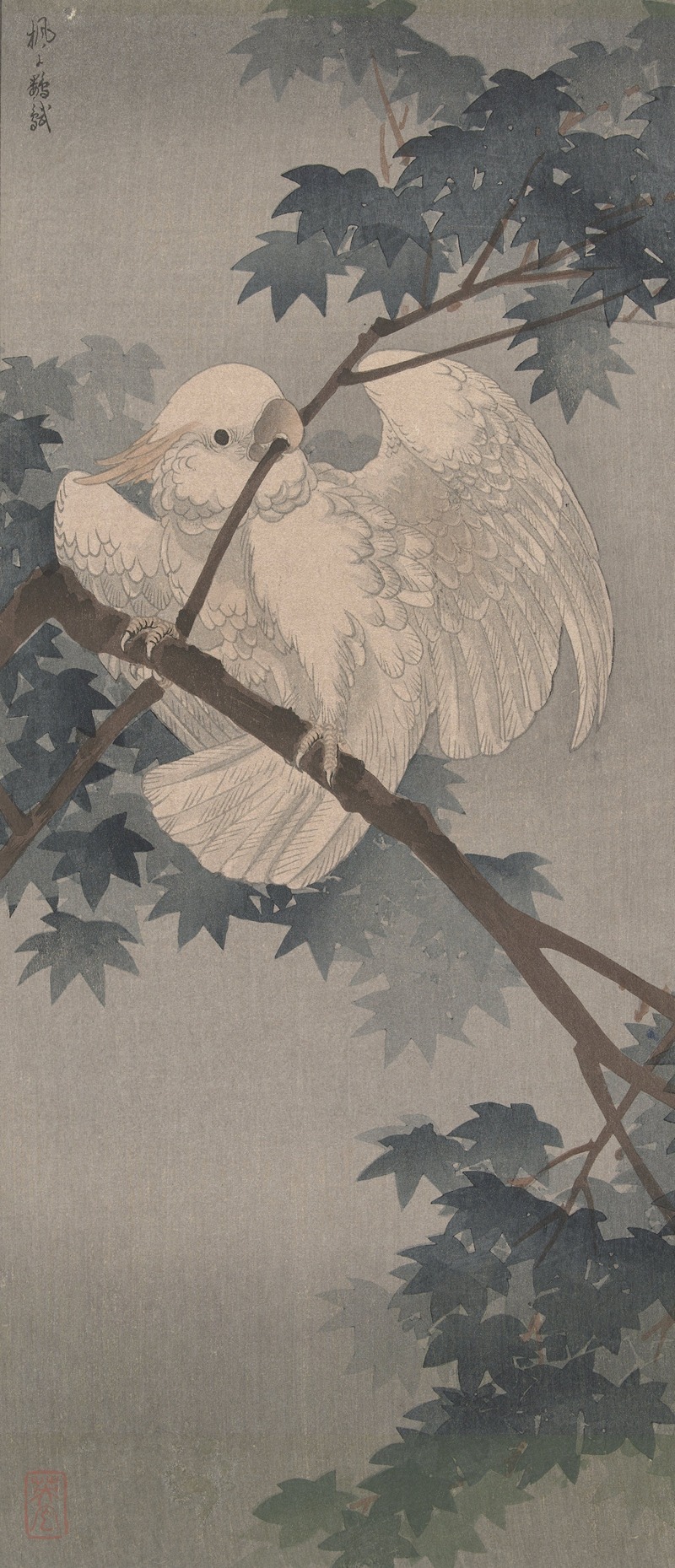
Yellow crested cockatoo in tree
A hand-painted replica of Ohara Koson’s masterpiece Yellow crested cockatoo in tree, meticulously crafted by professional artists to capture the true essence of the original. Each piece is created with museum-quality canvas and rare mineral pigments, carefully painted by experienced artists with delicate brushstrokes and rich, layered colors to perfectly recreate the texture of the original artwork. Unlike machine-printed reproductions, this hand-painted version brings the painting to life, infused with the artist’s emotions and skill in every stroke. Whether for personal collection or home decoration, it instantly elevates the artistic atmosphere of any space.
Ohara Koson (1877–1945) was a prominent Japanese artist known for his exquisite woodblock prints, particularly those depicting birds and flowers, a genre known as kachō-e. His work is celebrated for its delicate beauty, attention to detail, and the ability to capture the essence of his subjects with elegance and precision. One of his notable works is "Yellow Crested Cockatoo in Tree," which exemplifies his mastery in portraying avian subjects.
Koson's career spanned a period of significant change in Japan, as the country transitioned from the Meiji era into the modern age. He was part of the shin-hanga (new prints) movement, which sought to revitalize traditional ukiyo-e art by incorporating Western elements such as perspective and shading, while still maintaining the quintessentially Japanese aesthetic. This movement was instrumental in bringing Japanese prints to a global audience, particularly in the early 20th century.
"Yellow Crested Cockatoo in Tree" showcases Koson's ability to blend traditional Japanese techniques with a keen observation of nature. The print features a yellow-crested cockatoo perched gracefully on a tree branch. The composition is balanced and harmonious, with the bird's vibrant plumage contrasting against the subtle hues of the tree and background. Koson's use of color is both restrained and expressive, capturing the cockatoo's distinctive crest and the texture of its feathers with remarkable skill.
Koson's work often reflects a deep appreciation for the natural world, and this print is no exception. The cockatoo, a bird not native to Japan, indicates Koson's interest in exotic species and his ability to render them with authenticity and charm. His attention to detail is evident in the meticulous depiction of the bird's anatomy and the careful rendering of the tree's bark and leaves.
The shin-hanga movement, with which Koson was associated, was characterized by collaboration between artists, carvers, printers, and publishers. This collaborative process was essential in producing high-quality prints that could be appreciated both in Japan and abroad. Koson's prints were particularly popular in the United States and Europe, where they were collected by art enthusiasts and contributed to the Western fascination with Japanese art and culture.
Koson's legacy as an artist is marked by his ability to convey the beauty and tranquility of nature through his prints. His work continues to be admired for its technical excellence and aesthetic appeal. "Yellow Crested Cockatoo in Tree" is a testament to his skill in capturing the essence of his subjects, making it a cherished piece among collectors and art historians alike.
In summary, Ohara Koson's "Yellow Crested Cockatoo in Tree" is a fine example of the shin-hanga movement's success in blending traditional Japanese art with modern influences. Koson's meticulous attention to detail and his ability to evoke the serene beauty of nature have secured his place as one of the foremost artists in the genre of kachō-e. His prints remain highly valued for their artistic merit and their contribution to the appreciation of Japanese art worldwide.





